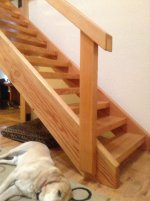I just got of1400 in Canada. Got also nearly all accessories for it from amazon.
It is not heavy nor large unit and is easy on dado too and small grooves...
Many here have and of1010. Why both?
Might be two routers is a must? I am a beginner in the trade...
If need two is not better to have two of1400 than 1010 + 1400 (accessories sake)
It is not heavy nor large unit and is easy on dado too and small grooves...
Many here have and of1010. Why both?
Might be two routers is a must? I am a beginner in the trade...
If need two is not better to have two of1400 than 1010 + 1400 (accessories sake)

